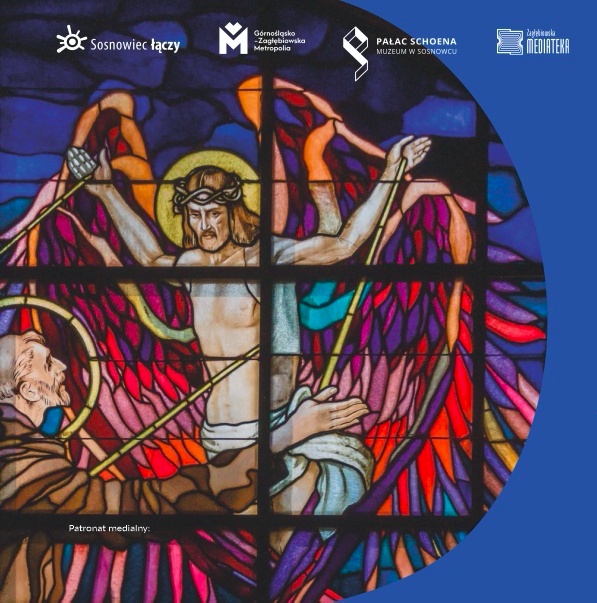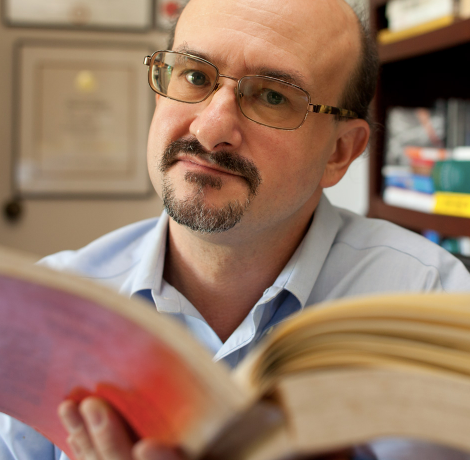
Worth a look
Project of Conservation of Three Designs for Stained Glass Windows in Sosnowiec Has Been Completed
Art and Heritage in Central Europe
On December 15, 2023, the project “Conservation of stained glass designs from 1936 by Jan Bukowski for the cathedral of St. Assumption of the Blessed Virgin Mary in Sosnowiec” co-financed by the Minister of Culture and National Heritage from the Cultural Promotion Fund, completed by the Schoen’s Palace Museum in Sosnowiec, is officially coming to an end.
HERITO is the media patron of the project.
The basic goal of the project, i.e. restoring three large-format stained glass designs from the collection of the Sosnowiec museum has been fully achieved. The works will serve researchers of Jan Bukowski’s oeuvre as well as the art of the interwar period for many years to come. They are also an extraordinary testimony to the past of Sosnowiec, a city with a unique common Krakow-Sosnowiec cultural heritage, the best evidence of which is the interior of the cathedral basilica of Assumption of Virgin Mary.
On December 11, 2023, Director Paweł Dusza closed the “Recovered Heritage” exhibition, during which three large-format designs were publicly presented for the first time: “The Blessed Virgin Mary”, “Our Lady of the Rosary with Child” and “The Stigmatization of St. Francis” (preserved partially). These are executive designs for the three stained glass windows made in the church of Assumption of Virgin Mary in Sosnowiec, since 1992 serving as the cathedral church of the then newly established Sosnowiec diocese. It is an extraordinary temple. Built thanks to the efforts of Fr. Dominic Roch Milbert in 1893-1899 in the Neo-Romanesque style, designed of the famous Warsaw architect Karol Kozłowski. Its incredible beauty is determined by its eclectic interior decorated with murals by Włodzimierz Tetmajer and Henryk Uziembło (1904-1906), and a set of 43 stained-glass windows designed by Jan Bukowski, which were produced in 1935-1939 by the Krakowski Zakład Witrażów S. G. Żeleński.
The designs from the collection of the Schoen’s Palace Museum were made by Jan Bukowski in 1936 for the stained glass windows that are still in the cathedral’s transept. The inscriptions, signatures and dates preserved on the designs and stained glass windows clearly authorship, and the fact that the donors were the husband and wife Stanisław and Maria Kraupe (“The Stigmatization of St. Francis” and “The Blessed Virgin Mary”) and Ludwik and Helena Piątkowski (“Our Lady of the Rosary”).
Many factors determine the high value of the designs in question. Dr. Hab. Andrzej Laskowski, prof. UEK, listed in his oppinion among the most important ones:
- Authorship of Jan Bukowski (1873-1943), an important artists of the first half of the 20th century Cracow.
- Production by the Krakowski Zakład Witrażów S.G. Żeleński, one of the oldest and most successful workshops in Poland, still producing stained glass windows to this day. It was established in 1902, and from the beginning of 1907 (including the entire interwar period) it was in the hands of the Żeleński family, the first owner of whom, Stanisław Gabriel Żeleński, made Jan Bukowski the first artistic director of the company. The best Polish stained glass and mosaic designers worked for the Żeleński, among whom Bukowski held an important place, maintaining cooperation with the company until his death in 1943.
In the interwar period, after the death of her husband Stanisław Gabriel in 1914, the company was run by Iza Żeleńska, who was later supported by her son Adam. - Uniqueness – the designs are the only artistic trace of the process of creating the stained glass windows for the Sosnowiec church, and at the same time one of the few works of this type by Jan Bukowski that have survived to this day, despite the artist’s enormous achievements in this field. On the other hand, in spite of relatively large number of preserved stained glass windows created in Poland from the end of the 19th century to the outbreak of World War II, only a small part has documentation in the form of designs.
The carefully preserved stained glass designs will return to the museum magazine, and their condition will finally enable additional scientific, research and popularisation activities. Additionally, you are encouraged to watch a video produced within this project:
https://www.youtube.com/watch?v=vrqyXJu8G8A
Co-financed by the Ministry of Culture and National Heritage from the Culture Promotion Fund.
Copyright © Herito 2020



